The 8 Best Canon Rebel T7 Lenses
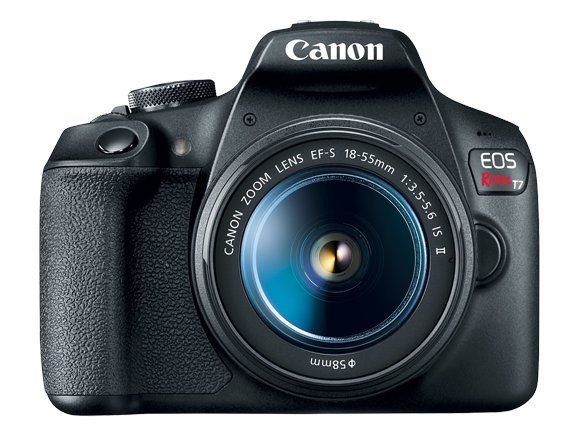
When it comes to photography, the Canon EOS Rebel T7 is a versatile and powerful tool that can help bring your vision to life. With a solid 24.1 Megapixel APS-C sensor and a wide range of compatible lenses, the T7 provides a remarkable platform for both professionals and hobbyists.
However, understanding which lenses to invest in can be a daunting task, especially for beginners. This article aims to help you understand the basics of camera lenses, identify the best lens for different types of photography, and provide insight into the lens compatibility of the Canon EOS Rebel T7.
We will also delve into the types of memory cards and batteries you should consider for your Canon T7 to ensure optimum performance.
Best Canon Rebel T7 Lenses:
Affiliate Advertising Disclosure
Outside the Shot is a participant in the Amazon Services LLC Associates Program, an affiliate advertising program designed to provide a means for sites to earn advertising fees by advertising and linking to Amazon.com.
As an eBay Partner, I may be compensated if you make a purchase. I also participate in affiliate advertising programs with KEH and Adorama. More can be found on the Affiliate Discolsure page.
- Best All-Around Zoom: Canon EF-S 17-55mm f/2.8 IS USM
- Best Telephoto Zoom: Sigma 18-300mm f/3.5-6.3 DC OS
- Best Prime Lens: Canon EF 50mm f/1.8 STM
- Best Lens for Video: Canon EF-S 10-18mm f/4.5-5.6 IS STM
- Best Lens for Portraits: Canon EF 85mm f/1.8 USM
- Best Lens for Sports & Wildlife: Tamron SP 150-600mm f/5-6.3 Di VC USD G2
- Best Lens for Landscapes: Canon EF 20mm f/2.8 USM
- Best Lens for Macro: Canon EF-S 60mm f/2.8 Macro USM
Lens Compatibility with the Canon EOS Rebel T7
The Canon EOS Rebel T7 uses the EF-S lens mount but is also compatible with Canon’s full-frame EF lenses. EF-S lenses are specifically designed for APS-C sensor cameras like the T7, offering lighter, more compact designs. On the other hand, EF lenses provide a broader selection and are future-proof if you ever decide to switch to a full-frame Canon camera.
Camera Lens Basics
A camera lens is essentially your camera’s eye, playing a crucial role in determining the clarity, depth, and overall quality of your images.
There are different types of lenses designed for various purposes: prime lenses known for their fixed focal lengths and high image quality, zoom lenses that offer a range of focal lengths, wide-angle lenses ideal for capturing broad vistas, and telephoto lenses designed for zooming in on distant objects.
Each lens has a unique character and can drastically change the mood and feel of your photos.
Best Lenses for Types of Photography
Different types of photography require different types of lenses. Here are some general suggestions:
- Portrait Photography: A 50mm or 85mm prime lens, like the Canon EF 50mm f/1.8 STM or Canon EF 85mm f/1.8 USM, will provide a pleasing perspective and beautiful bokeh for professional-grade portraits.
- Landscape Photography: A wide-angle lens, such as the Canon EF-S 10-18mm f/4.5-5.6 IS STM, is ideal for capturing vast landscapes.
- Wildlife and Sports Photography: A telephoto zoom lens, like the Canon EF 70-300mm f/4-5.6 IS II USM, will enable you to capture fast action from a distance.
- Macro Photography: A dedicated macro lens, such as the Canon EF-S 60mm f/2.8 Macro USM, will help you capture small details with precision.
All-Around Best Zooms
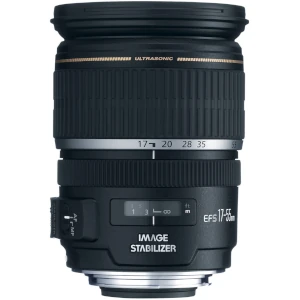
Canon EF-S 17-55mm f/2.8 IS USM: The build quality of this lens is what you would expect from Canon’s full-frame L-series, but it is meant for APS-C sensor cameras that have the EF-S mount. It is a big improvement from the zoom included with the EOS Rebel T7.
The large maximum aperture is continuous through the zoom range allowing for a shallow depth of field and fantastic background blur. Built-in image stabilization helps to combat camera shake and increases image sharpness.
If out of all Canon lenses offered, you could only choose one, this is going to be the best pick.
See current price and more information on:
Sigma 17-50mm f/2.8 EX DC OS HSM FLD: Built-in image stabilization allows for the ability to shoot tack sharp images at up to 4 stops slower than without stabilization. With the large aperture and great zoom range, the lens is good for all kinds of photography from landscapes to portraits.
Judging by the enthusiastic reviews, owners fall in love with this lens. It could end up permanently mounted to your camera.
See current price and more information on:
Canon EF-S 15-85mm f/3.5-5.6 IS USM: With an equivalent zoom range of 24-136mm in FX format, it makes a great selection for everyday photography. Additionally it is one of the most popular picks for a single travel lens.
See current price and more information on:
Best Telephoto Zooms
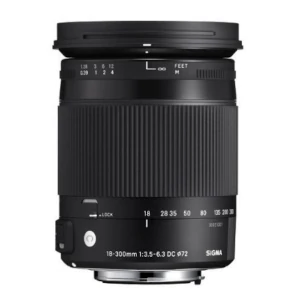
Sigma 18-300mm f/3.5-6.3 DC OS: This is just like having a bunch of zooms put together together. With a 16.6x zoom ratio, all focal lengths from telephoto to wide angle are available. Built with 13 groups containing 17 elements, with four FLD and 1 SLD element, results in a lens that is able to capture sharp crisp, high-quality shots, without the need to be concerned with aberrations.
The sizeable focal length range does have the cost of being large and heavy. There are many lenses that can be better to dedicate a day carrying around with the Canon EOS Rebel T7.
See current price and more information on:
Canon EF-S 18-200mm f/3.5-5.6 IS: This is a very compact and lightweight lens that is still equipped with a very usuable zoom range. This is an outstanding solution that offers superb performance, 4 stops of image stabilization, and has a cost-effective price. This is the lens to get to avoid increased weight and size.
See current price and more information on:
Canon EF 75-300mm f/4-5.6 III: More compact and lighter weight than the other recommendations previously mentioned, which can be a benefit if you would rather not haul around a bulky camera. The focal length is equivalent to 120-480mm on a Canon APS-C sized sensor.
Built without stabilization, it’s actually more low-priced. This is one of the lenses that is best to use outdoors with plenty of sunlight.
See current price and more information on:
Best Prime Lenses
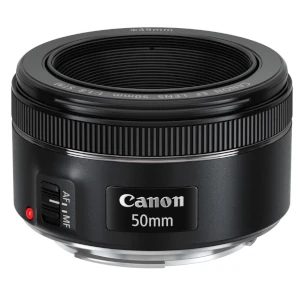
Canon EF 50mm f/1.8 STM: This is one of the best lenses made by Canon as it provides great image quality, but still comes in a small and lightweight package. The large f/1.8 aperture makes this classic focal length a great option for shooting in low light. An excellent lens for all photographers that can find a place in every camera kit.
Steer clear of the old version because the motor that drives the focusing system is noisy and slow. If you attempt to save a little bit of cash, you will likely not be fond of the result. This is especially relevant if you are planning to record video.
See current price and more information on:
Canon EF-S 24mm f/2.8 STM: Out of all the options built for the EF-S mount, this is the most compact and slimmest. This wide angle is known as a “pancake” on account of the minimal size, making it the ultimate pick for travel photography. It can capture pictures as close as 6 inches (16 cm).
See current price and more information on:
Sigma 35mm F1.4 Art DG HSM: A terrific creation demonstrating what contemporary optical engineering is able to produce. Shot wide open, photographs are tack sharp, from corner to corner. The hyper-sonic motor (HSM) delivers accurate, fast, and quiet autofocus.
See current price and more information on:
Best Lenses for Video & Vlogging
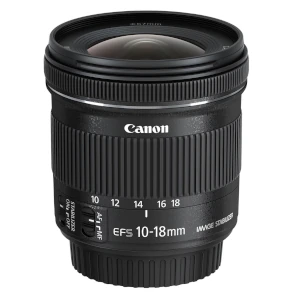
Canon EF-S 10-18mm f/4.5-5.6 IS STM: Out of all the lenses for Canon, this is the best option for capturing video. The ultra-wide-angle zoom range is ideally suited for creating videos and vlogging. A stepping motor (STM) facilitates smooth accurate autofocus that won’t make any noise which can negatively impact audio. Also, it is compact and light weight enough to not become tiresome to carry while on the Canon EOS Rebel T7.
Keep in mind that you can also purchase the Canon portrait and travel lens kit that contains the Canon 50mm f/1.8 STM. The combination is an excellent option if you would like to have two of Canon’s best lenses, while saving some money.
See current price and more information on:
Tokina AT-X 116 PRO DX-II 11-16mm f/2.8: It is simple to switch from manual focus to auto focus without taking your hand off the focus ring due to the one-touch focus clutch mechanism. The lens is also a very good choice to try astrophotography because of the f/2.8 constant aperture.
See current price and more information on:
Sigma 10-20mm f/3.5 EX DC HSM ELD SLD: Another wide angle zoom lens that is full of optical engineering. An internal focusing system makes it possible to use a petal-type lens hood that typically will do a better job of blocking light than a round hood. Quiet functionality is ensured by a hyper sonic motor (HSM).
See current price and more information on:
Best Lenses for Portrait Photography
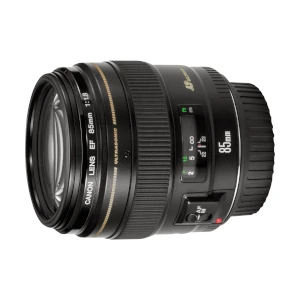
Canon EF 85mm f/1.8 USM: Many people would consider this the most popular lens for portraits built by Canon. The wide f/1.8 aperture is a good option for photography in low light and can produce a shallow depth of field, with creamy bokeh, to isolate the subject. For wedding photographers, this is a extremely important lens to purchase.
See current price and more information on:
Sigma 50mm F1.4 Art DG HSM: A great lens that is an excellent pick for portrait photography as well as street, studio work, and landscape, with a professional level build quality. There’s hardly any vignetting or distortion and it is incredibly sharp from corner to corner, even shot wide open.
See current price and more information on:
Canon EF 100mm f/2 USM: Comparable to the Canon 85mm f/1.8, but was designed with a "" longer focal length. Similar to the other two lenses, it is great for low-light photography in a streamlined package that is easy to use.
This lens is not currently being made, so finding a new copy might be tough. Many used copies are still readily available. Check a few sites to find the best price.
See current price and more information on:
Best Lenses for Sports & Wildlife
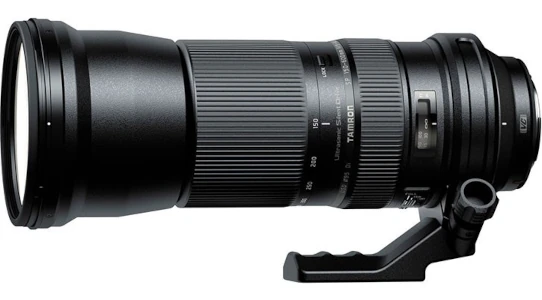
Tamron SP 150-600mm f/5-6.3 Di VC USD G2: The G2 is the 2nd gen version of the lens and shows a large improvement by Tamron. Photo quality has gotten much better across the complete zoom range and at the same time still having a terrific build quality. Exceptionally fast and accurate autofocus system is driven by an ultrasonic silent drive motor. With this mounted on your camera, you’ll have no problems taking awesome action or wildlife images.
See current price and more information on:
Sigma 150-600mm f/5-6.3 Contemporary DG OS HSM: The Sigma is built with a streamlined and light build considering it is a hyper-telephoto zoom lens. Furthermore the hyper sonic motor and optical stabilizer, it contains a built-in accelerometer that will help improve photos when panning. As an additional benefit, there is often a promo deal that is a bundle of additional products including free shipping with the lens when you purchase one. That’s fantastic as free camera gear is difficult to refuse.
See current price and more information on:
Canon EF 100-400mm F4.5-5.6L IS II USM: Undoubtedly, the lens has much better photo quality than the others. Unfortunately, that quality goes along with a substantial cost that is much larger than that of the camera. One of many great features of this lens is a rotation-type zoom ring which includes configurable torque settings making it possible to customize the lens to your personal liking.
See current price and more information on:
Best Landscape Photography Lenses
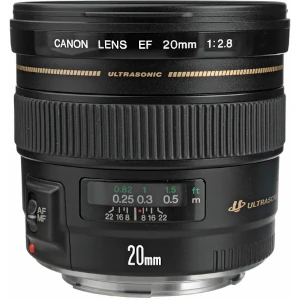
Canon EF 20mm f/2.8 USM: Tipping the scales at only 14.3oz (405g), this lens is a wide focal length that remains compact and lightweight. Even when set to AF there is a manual focus override, which makes it easier to nail focus. If you plan on hiking with the Rebel T7, this lens is a terrific pick as it is going to fit in just about any camera bag.
See current price and more information on:
Samyang 14mm f/2.8 IF ED UMC: Utilizing a integrated petal-type lens hood, this ultra-wide lens is a budget offering. A great choice for not only landscape photography but as well as for real estate and astrophotography. It can focus as close as 14 cm (10.8 inches), but that will result in exaggerated distortion effects.
See current price and more information on:
Sigma 20mm f/1.4 DG HSM Art: The widest lens in the Sigma Art series lineup, the 20mm has a truly pro construction. Built with 15 elements in 11 groups with a Low Dispersion and 5 Special Low Dispersion elements, axial chromatic aberration, field curvature, and spherical aberration have all been minimized.
It is a somewhat big and heavy piece of glass. Don’t count on it to be well balanced when mounted on the camera.
See current price and more information on:
Best Canon Lenses for Macro
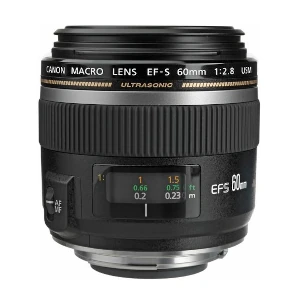
Canon EF-S 60mm f/2.8 Macro USM: The first to be produced for the EF-S mount, this is a actual macro lens, capable of achieving 1x magnification. It has an internal focusing system, meaning the front element won’t move when focusing. You will love the razor sharp photographs made by this lens. It is a fantastic pick to use on the EOS Rebel T7 due to the small size and value being hard to outdo.
See current price and more information on:
Canon EF 100mm f/2.8L Macro IS USM: With internal focusing and image stabilization, it is obvious why this is a pro L-series lens. It is a great choice to use out into the field because it is weather sealed. Buy this lens and you’ll not need to go looking for another solution.
See current price and more information on:
Tamron AF 90mm f/2.8 Di SP A/M 1:1 Macro: With recessed front element and a terrific working distance, you’ll probably never need to attach the hood. Take into account that it does not have an internal focusing system, so the lens will extend when focusing on close subjects.
One other possible disadvantage if you desire to use it as a portrait lens is that there is no built-in optical stabilization. That will not be a major problem if the lens is used with flash.
See current price and more information on:
Canon T7 Memory Card
Your Canon T7 uses SD, SDHC, or SDXC memory cards. For most photographers, a Class 10 SD card, such as the SanDisk Extreme PRO 64GB, will provide sufficient speed and storage. However, if you plan on shooting lots of video or bursts of photos, consider a UHS-I or UHS-II card for faster write speeds.
Canon Rebel T7 Battery
The Canon Rebel T7 uses the Canon LP-E10 battery. With average use, you can expect about 500 shots per charge. It’s always wise to have one or two extra batteries on hand, especially for lengthy photo shoots or travel.
In Conclusion
Understanding the role of lenses, their compatibility with the Canon EOS Rebel T7, and the importance of appropriate memory cards and batteries, can elevate your photographic experience and results. The right tools will open doors to creative exploration and help you capture your vision accurately.
Related Posts
Below are articles related to the Canon Rebel T7 camera: